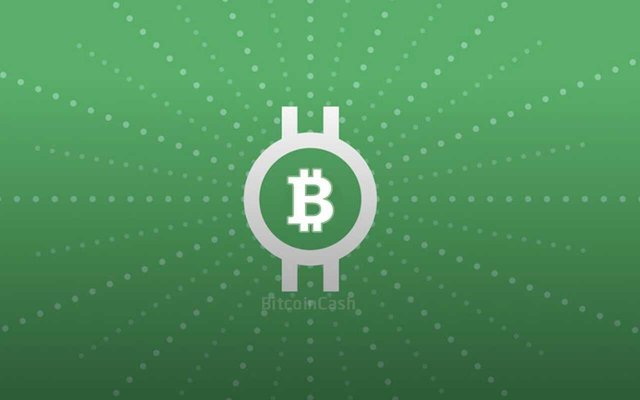Bitcoin Cash, Killer or Complementary Bitcoin?

The Bitcoin community had a really interesting week. On August 1, 2017, we witnessed one of Bitcoin's most controversial splits as well as the most eagerly awaited audience. This split is the culmination of a feud between parties who want an increase in block size (more than 1 MB) with those who want the block size to remain the same as determined by Satoshi Nakamoto (1 MB).
Split Bitcoin
Split Bitcoin (branching blocks from one rod into two or more branches) is not just just this once. Some Altcoins have been created using the same blockchain base as Bitcoin. Call it MasterCoin and Colored Coin. It is not difficult to create a "counter" to Bitcoin, given that Bitcoin source code is accessible to anyone, modified, and launched using a new name. With this method, everyone around the world can make their own coins derived from similar source code.
Split Bitcoin is not just happening in terms of branching blockchain. Source code modifications that lead to the creation of an entirely new coin (Altcoin or Alternative Coin) also occur all the time. At least Litecoin and Dogecoin are examples of the popular Altcoin derivatives of Bitcoin.
Bitcoin Cash
More details about Bitcoin Cash, the beginning of Bitcoin Cash's idea came from UASF's UASF mitigation plan called UAHF by Bitmain. UAHF is trying to counteract the possible chaos posed by the UASF that may fail. Because, according to this UAHF document, to be successful UASF requires the support of the miners with a significant percentage of mining power. It turns out that Bitmain's proposal was struck by ViaBTC, one of the mining pools that originated in China and has enough resources to carry out its action. ViaBTC tested by developing Bitcoin ABC software before steady with the choice of Bitcoin Cash name. One important rule in this new system is the block size that "should be larger than 1 MB" in order to split and break away from the main branch of Bitcoin. The first block produced using this new rule was successfully created on block number 478559 with a size of 1.9 MB.
Why Bitcoin Cash
Proponents of block size increases may no longer know how to fight for their aspirations to get their proposal into Bitcoin's main source code. Long before Bitcoin Cash was initiated, several initiatives had failed, among them Bitcoin XT, Bitcoin Classic, and Bitcoin Unlimited. These three alternative solutions did not succeed in winning the majority of miners' support and were eventually abandoned. The difference between these three software with Bitcoin Cash is that they are not trying to create new coins through Bitcoin split. While Bitcoin Cash is ultimately no longer motivated to replace Bitcoin Core, it chooses to break away from the main Bitcoin chain that is more likely to lead to the Segwit (Segregated Witness) solution.
Killer or Complement
The option to split up the conflict about Bitcoin scalability is probably not the best choice. I analyze at least 2 options that can happen to Bitcoin Cash, which is a killer Bitcoin or just as a complement Bitcoin. Given that ViaBTC is one of the big players in Bitcoin, if they do have a high commitment to their chosen alternatives, then Bitcoin Cash will still exist (and not die like hundreds or thousands of Altcoins ever). Bitcoin Cash can be a substitute for Bitcoin if indeed SegWit, originally conceived by Pieter Wuille, fails to address the increasingly chronic problem of Bitcoin scalability and leads to significant increases in Bitcoin costs (up to tens of times of reasonable cost).
SegWit itself is actually one of the high-end solutions alternative, because it is considered able to provide "bidders" for the bleeding of Bitcoin network because it is too dense with the number of transactions increased rapidly, without going through hard fork. SegWit only needs soft fork, does not increase the "original block size", and moves the "witness" data to other more manageable capacity places. Through SegWit, developers can fix one of the most serious security holes in Bitcoin, the transaction malleability (which is considered responsible for the case of Mt. Gox many years ago). SegWit itself can be seen as an attempt to increase the block size, as there will be a separate portion containing the witness and eventually able to increase the capacity equivalent to a block size of 4 MB (Jimmy Song gives a good explanation). In addition to increased block capacity and omission of transaction malleability, SegWit also enables the addition of exciting features such as Lighting Network, and perhaps in the future there are other features that can be added, if indeed SegWit is able to withstand the strong wind blown by Bitcoin Cash.
If the community is indeed split in two (some prefer to stay in Bitcoin and some decide to migrate to Bitcoin Cash), then we will see 2 systems that run separately from each other. To survive of course each need to make innovations so as not to be abandoned by users. As a belief that I still hold today, a cryptocurrency token is worth saving if and only if it is capable of providing technological benefits, not just as a commodity in the exchange market.